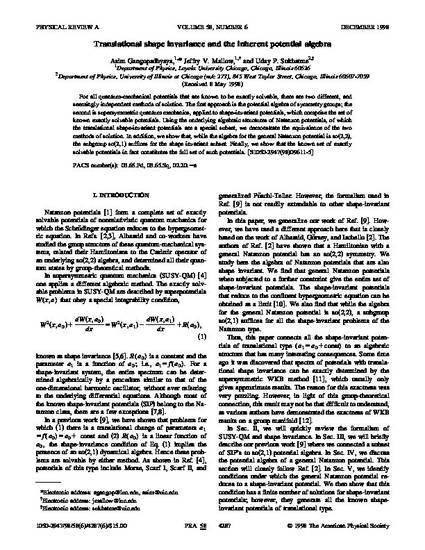
For all quantum-mechanical potentials that are known to be exactly solvable, there are two different, and seemingly independent methods of solution. The first approach is the potential algebra of symmetry groups; the second is supersymmetric quantum mechanics, applied to shape-invariant potentials, which comprise the set of known exactly solvable potentials. Using the underlying algebraic structures of Natanzon potentials, of which the translational shape-invariant potentials are a special subset, we demonstrate the equivalence of the two methods of solution. In addition, we show that, while the algebra for the general Natanzon potential is so(2,2), the subgroup so(2,1) suffices for the shape invariant subset. Finally, we show that the known set of exactly solvable potentials in fact constitutes the full set of such potentials.
© 1999 The American Physical Society.

Author Posting. © The American Physical Society, 1998. This is posted here by permission of The American Physical Society for personal use, not for redistribution. It was published in Physical Review A 58, 4287, 1998 http://dx.doi.org/10.1103/PhysRevA.58.4287.